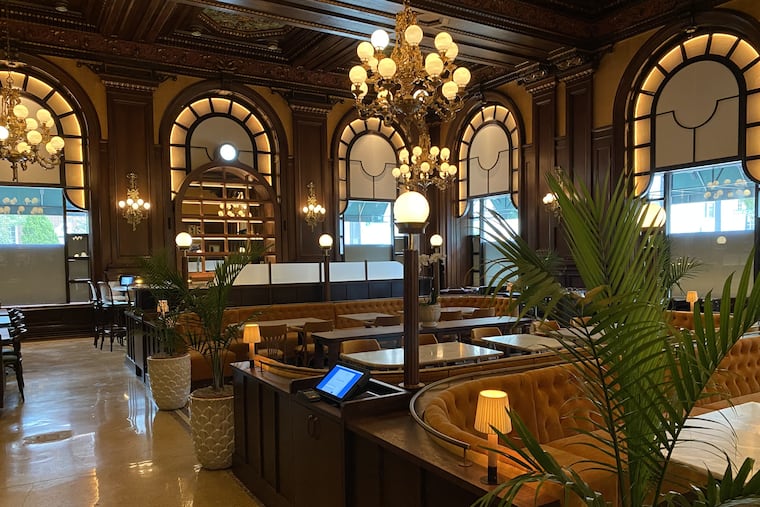A chef goes home to reinvent the landmark restaurant at the Hotel du Pont as Le Cavalier
"We got rid of the classical music and the penguin-suit vibe,” the Philadelphia chef says of the Wilmington landmark.

Growing up in the Wilmington area, Tyler Akin knew all about the Green Room at the Hotel du Pont.
Opened in 1913, the restaurant was Delaware’s ne plus ultra dining experience, site of big birthdays, anniversaries, promotions, and other celebrations and special occasions. Politicos such as now-presidential candidate Sen. Joe Biden held court there.
“I have memories of this restaurant going back as far as I have memories,” said Akin, 36, who earlier in his career was chef at Zahav and owns the Stock restaurants and a portion of Res Ipsa Cafe in Philadelphia. He recalls dinners with his grandmother — putting on a suit and listening to classical music in a grand but old-fashioned dining room.
“When I got older and understood the importance of it and how much it meant to the community, I had the daydream of having the opportunity to reimagine it,” Akin said. “In the back of my mind, if I was ever going to be back in Delaware and doing a restaurant, I’d want this to be it. Then the stars aligned and the new ownership, the Buccini/Pollin Group and PM Hotel Group, bought it from the du Ponts and called me. Fortunately, I had the bandwidth and maturity to do it. And they agreed.”
Next month, an eight-month renovation will be unveiled at what is now known as Le Cavalier at the Green Room. Like the name itself, the restaurant will have old and new elements.
The fumed oak paneling and ornate plaster ceiling remain, as will most of the gilded chandeliers. The designer Stokes Architecture & Design of Philadelphia removed the chandeliers’ now-fake candles, adding globe-shape lighting closer to the floor.
Le Cavalier will be less formal, befitting the 21st century, with the idea of satisfying everyday as well as special-occasion patrons. “We got rid of the classical music and the penguin-suit vibe,” Akin said. “Food will be prepared carefully, thoughtfully, and creatively but [we won’t do] the vertical presentation.” It will be more rustic brasserie style on the plate — a community restaurant, where people can come once a week or to a lunch meeting.
One especially new/old detail will involve looking down. “We’d heard a lot about the tile flooring, various stories, actually, and it became a bit of folklore to us,” said Lance Saunders, Stokes’ director of design. “Was it there? If so, was it a match to what’s visible currently in the host vestibule? Was it covered up by a layer of concrete beneath the existing carpet?
“Tyler and I dove into the archives at the Hagley Museum, but we hadn’t found any photographic evidence of it there either. Finally, we uncovered a solid hint in a local story from the grand opening back in 1913 noting the marble mosaic and terrazzo floor. And then we just crossed our fingers that when the carpet came up, it was all still intact. Luckily for us, it was. And it’s a stunner.”
Alas, much of the original artwork went to the Brandywine River Museum during the sale. More modern paintings were installed.
Akin’s menu, with entrees priced at $16 to $40, will be classic brasserie, with touches of North African — essentially “what you’d find in Paris.”
Dining rooms may operate at 60% capacity in Delaware; there is outdoor dining as well.
The scope of the project and juggling several restaurants in two cities do not faze Akin. “I’m convinced I can do it because there were plenty of nights that Zahav was under my purview,” he said. “I’m comfortable running a service where it turns a hundred people over and over.”